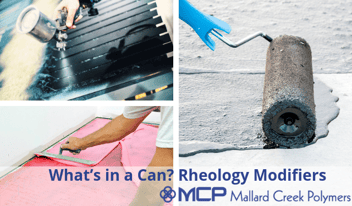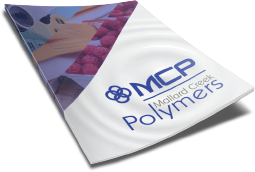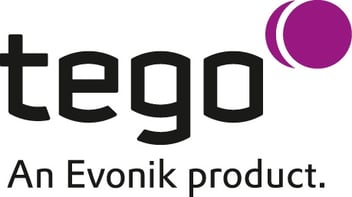
What’s in a Can? A Chat with THOR Specialties about Preservatives
A chat with Rodney Rees (Technical Manager) of THOR Specialties, Inc.Contact: info@ThorSp.com Website: www.thor.com Water Means Life Many formerly solvent-based products have been replaced by aqueous-based functional equivalents to reduce the..
A chat with Rodney Rees (Technical Manager) of THOR Specialties, Inc.
Contact: info@ThorSp.com Website: www.thor.com
Water Means Life
Many formerly solvent-based products have been replaced by aqueous-based functional equivalents to reduce the environmental and health impact of volatile organic components (VOC). Organic solvent/oil/glycol-containing products are generally inhospitable to spoilage organisms, requiring no preservation against microorganisms. Not surprisingly, waterborne products are very prone to spoilage and degradation by the action of microorganisms.
To meet shelf-life expectations and to preserve functional integrity, the use of preservatives is imperative. The microorganisms of most relevance are bacteria, yeasts, molds and algae (exterior coatings).

Effects of microbial infestation
The effects on liquid aqueous-based products include:

- pH change
- gas generation
- discoloration
- visible surface growth
- malodor
Mold and algal growth on cured coatings doesn’t just have an impact on the surface appearance and integrity, as shown below, but may also have negative consequences on human health.

Coatings Preservation
There are two broad types of Coating Preservatives: Those used to preserve aqueous-based products in their liquid form (In-can Preservatives) and those used to prevent biological growth on the cured product in-service (Dry-Film Preservatives).
In-can Preservatives
Over the past few decades, the demand for environmentally friendly and less ‘unhealthy’ coatings has increased significantly, often accompanied by stricter regulatory requirements. Binder design went through an evolution from solvent-borne to aqueous-based, followed by subsequent reduction in residual monomer level to a minimum, to keep pace with these needs.
These changes have contributed tremendously to the susceptibility of coatings to microbiological spoilage.
There are only a handful of effective active in-can ingredients available today able to fulfill the preservation requirements of highly susceptible modern aqueous compositions.
The isothiazolinone group have become the molecules of choice. This is for good reason, because they have very effective generalist modes of action targeting all relevant spoilage organisms at low and safe addition levels. Chloromethyl (CIT), methyl (MIT) and benziosothiazolinone (BIT) are typically used. Several “co-actives” can be used in conjunction with the various isothiazolinone chemistries, to target specific organisms. These include organo-zinc and organo-halogen compounds such as zinc pyrithione and bromonitropropane diol.
Considering this, most effective in-can preservation products are based on multiple active ingredient blends, usually based on isothiazolinone platforms (MIT/BIT or CIT/MIT). THOR never recommends the use of single active preservative formulations. The use of two or more actives together either provides synergistic or additive effects (or both) giving them a very broad range of activity against all potential spoilage organism types. Chemists, biochemists and microbiologists jointly formulate such compositions to ensure optimum compatibility and efficacy over the broadest product range.
Dry-Film Preservatives
As was the case for in-can preservatives, there is also only a handful of effective dry film actives to choose from. These can be divided into molecules with predominantly fungicidal activity and those with predominantly algicidal activity. Fungicides are applicable to interior and exterior coatings to prevent mold establishment, but algicides are only applicable to exterior coatings. Encapsulation technologies give additional benefits to preservatives for coatings, extending their in-service life by reducing loss or deactivation under adverse conditions.
As was the case for in-can preservatives, compositions based on two or more actives are the most effective. THOR has the advantage of being able to encapsulate relevant dry film actives enabling us to formulate compositions which outlast older technology blends in the field. The predominant fungicides include iodopropynyl butylcarbamate (IPBC), octyl isothiazolinone (OIT), Zinc pyrithione (ZPT), dichloro octyl isothiazolinone (DCOIT), Carbendazim (BCM) and Chlorothalonil (CHL). BCM and CHL are not as common due to human and environmental concerns. Diuron is the predominant algicide, but Terbutryn is also used. Newer technology enables us to formulate blends of actives which display algicidal properties without using any of the traditional algicide chemistries.
The right choice for the right application
Selection of the most appropriate preservative for any given product or product range requires a systematic approach, considering all of the relevant of factors.
This includes:
- regulatory considerations (EPA, FDA, BPR)
- the product’s physiochemical properties (pH, Redox, polymer/vehicle type)
- compatibility and known problems with biocides already in use
- potential target organisms and condition of the manufacturing facility
- manufacturing process & relevant addition point
- logPOW (octanol/water partition coefficient)
- duration of protection required and cost impact
There is no one-size-fits-all universal product, for all application possibilities. Selecting the best preservative system for each individual application of polymers is a skill requiring experience and specialized training.
This service is provided to the industry by preservatives manufacturers like THOR Specialties, Inc., who have dedicated teams of Technical Service Specialists as well as microbiological and chemistry laboratories to test efficacy, suitability and longevity for any imaginable preservation requirement.
Two Sides of the Same Coin
Because preservatives are designed to inhibit or kill living organisms, users always need to be aware of the potential human and environmental hazards associated with them if not handled in accordance with recommendations on safety data sheets or if used in violation of regulations. Some actives in their concentrated form, if not washed off immediately after exposure, or if frequent exposure episodes to higher than recommended concentrations occur, can elicit allergic reactions in some individuals. Release of excessive amounts of concentrated preservative to the environment can also negatively impact sensitive ecosystems.
Such events can promote adverse (biased) press related to preservatives (or chemicals in general), as has occurred in recent years. Comprehensive, fact-based education or dialogue with the public or NGO’s can mitigate the effects of adverse press.
What most people fail to realize are the tremendous benefits preservatives have on improving human health by minimizing opportunistic infections by potential pathogens, or respiratory diseases following inhalation of mold spores. Without preservatives we would not be able to reduce air emissions, nor conserve valuable environmentally-derived raw materials nor mitigate tremendous environmental impact related to disposal or incineration of enormous volumes of spoiled water-based product.
All preservatives for industrial products require registration through Regulatory bodies such as the Environmental Protection Agency (EPA -United States) or European Chemical Agency (ECHA -European Union, as directed through the Biocidal Products Regulation - BPR).
Both the active and inert ingredients must be assessed for human health and environmental impact by considering results of acute toxicological and environmental studies and physicochemical data provided by the registrant.
The maximum levels at which preservatives can be used in any application are also approved by the authorities to ensure safe and effective use. In the US, this is provided on the approved EPA label for each preservative and is bound by federal law.
THOR prides itself on using only actives without adverse long-term environmental effects. All in-can actives can be diluted to levels at which they pose no adverse effects. In addition, for dry-film preservatives (which generally have low water solubility), Thor has developed an organic encapsulation delivery system (AMMETM) to enable the actives to be retained in application for significantly extended periods compared to standard preservative systems. Such rewards at significantly lower risk potential are what makes THOR market leaders and trend-setters.
Contact: info@ThorSp.com Website: www.thor.com

 Construction
Construction
 Nonwovens
Nonwovens
 Adhesives
Adhesives
 Textiles
Textiles
 Printing & Packaging
Printing & Packaging
 Paper
Paper
 Paints & Coatings
Paints & Coatings






